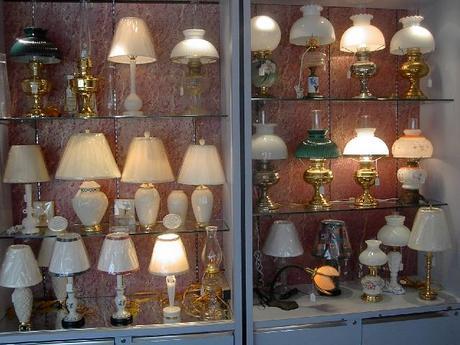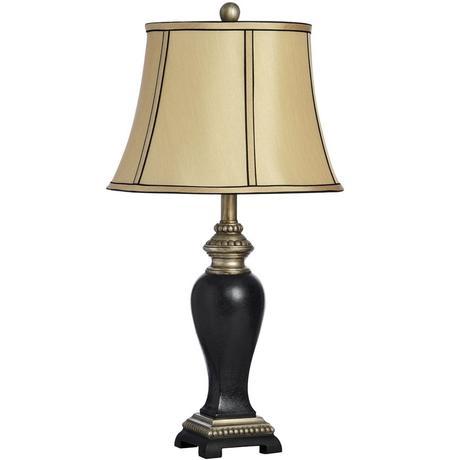Porcelain theme "Dresden" is not only wide, but can be a minefield. Dresden is more than one region or style of a decision, and basically a lost history. That's not what Dresden is known, but what is not known in the heart of the subject on Dresden.

Geographically Dresden on the Elbe is about 100 miles / 160 km south of Berlin and is the capital of the German state of Saxony.
When used by China and Saxony in the same sentence, we have to stop and remember that Saxony was the cradle of European porcelain early 18th century The driving force behind the push to explore "secret" way porcelain was Augustus, elector of Saxony and king of Poland.Augusto was a devotee of ceramics, to say the least, to be both a voracious collector of Chinese and Japanese porcelain. Augustus was not only fascinated, but well informed and knowledgeable on the subject. He was among the first in Europe, the sublime art of the 17th century "Kakiemon" for ceramic decoration Japanese style, which has found its way into the royal courts of Europe.
Augusto had amassed an extraordinary collection of Chinese and Japanese porcelain early (many of which are now seen in the city of Meissen - one of the great treasures of modern Germany). Not only it collects porcelain voters, but also thought deeply about how and why it was done.To add perspective, remember that this was the end of the 17th century; China and Japan were almost unknown in the West. There was a time corresponding to these exotic countries now considered from another planet.
Saxony was a state rich in its wealth of mining, has vast reserves of copper, tin, iron and silver. It has a considerable treasure Augustus founded a laboratory / workshop in Dresden Castle, a now famous chemist Johann Friedrich Böttger, as a researcher.
Bottger was a virtual prisoner, confined in the castle of Dresden, hard at work with trial and error experiments to discover the secret of porcelain. In 1704 Bottger could say that he could produce a type of porcelain (today, this first European museum Porcelain remember the enormous contribution of Johann Friedrich Böttger).
In 1710, with the production of porcelain now a real possibility, emotional Augusto Bottger and a workshop / furnace Dresden to Meissen, near Dresden 14 miles.
It was as if Auguste had opened the cave of Ali Baba. Meissen porcelain was asked immediately and sold as soon as it could be produced. Was so important that the discovery was designated as a state secret with severe penalties for anyone found reveal what he knew about the process.
The name "Meissen" followed by the word "China" is now recognized worldwide; but there is also a general confusion about the cross over between Dresden and Meissen. Two centers of porcelain, in fact, has nothing to do with the other. The confusion is due to several factors.
The first is that the experimental work early in Dresden, Meissen was done and then transferred to the second, which produces the Meissen porcelain sent to Dresden are sold throughout Europe.
Dresden was, of course, the capital of Saxony and the residence of the Elector of Saxony, so that the seat of government. Accordingly, the name of Dresden and Meissen have become blurred.
This uncertainty has become even more blurred when painters Dresden china, decorators or small house painting studio known as "house painter" in German, was, spaces or undecorated buy blank white porcelain capable Meissen factory. The complete white blank spaces with the famous brand Meissen "crossed swords". It was a recipe for confusion!
Dresden, developed with its close association with Meissen, especially in the 19th century on an industrial scale, making the city of China, with 225 studies Altan 1855-1944.
(Today, a large portion of the porcelain is decorated in Dresden recognized only by the brand of the company, in some cases, with little or nothing about the decision known with the exceptions of the leading manufacturers and designers so, Carl Thieme, Rosenthal and Helena Wolfsohn, Dresden name used as a generic rather than a specific ID).
The reason for the sudden extinction of the history of ceramics in the city of Dresden on the night of February 13, 1945 adopted the closing years of World War II.
Within a few hours Dresden was reduced to rubble with 3900 tons of bombs dropped by Allied air forces reduced by saturation bombing. 80% of the city was in ruins. Not a museum, decoration study or collection remained, including all records and historical documents.
One can imagine that Augustus the Strong, Elector of Saxony and King of Poland, has its beautiful baroque capital would have only thought.
We illustrate this article with a lovely couple Carl Thieme Dresden accent lamps in the neoclassical style.
Cap lamps arched shaped urns with handles shaped arch. Lamps mounted on a square base in a short soccle. porcelain lamps in the bathroom standing gold, custom bronze bases.
The dome cover and shoulders with delicacy lamps with small flowers and foliage decorated circles summer. The urns decorated with garlands of flowers and summer Roseleaf meander. The heart is composed of a wreath tied ribbon flowers, ribbon and a bow with a basket of flowers in suspension. Decoration repeated on the opposite side of the lamps. The beautiful golden lamps in their original state. Circa 1910 - Total height (including shade) 18 "/ 46cm
Antique Lamps - Japanese KutaniThe first examples of terracotta pots or vases of classical Greece withdrew, Chinese ceramics and fired clay pots African, are in museums around the world. No, but they once produced by the first ceramists humanity in northern Japan.
Archaeologists now know that a group of the earliest ancestors of man, now known as the Jomon people, the first crocks were firing, 16,500 years ago.

It was believed that even at this time mankind has not developed in the stage production of ceramics. Now, with the advantage of carbon-dating technology, this surprise can be confirmed before. These raw materials, of course, fall within the period of the Stone Age, or history, little is known, except for a few maintained today as a national treasure by the Japanese government.
Here we look at one of the famous and known ceramics from Japan, China "Kutani".
Today Japanese Kutani porcelain tends so often rich gold, red iron, glazed porcelain, often thinking small details in black or gray. This "Kutani Red" is often seen as vases, bowls and plates, but we have to go back to the image and see Kutani turn.
In the field of recorded history we first heard in 1655 Kutani Kutani porcelain is actually the name of a village, the name means "Nine Valleys". Kutani village is in the province of Kaga, located in the center of Hondo, the island south of Japan.
During the Edo period, 1603-1868, Japan was a feudal society ruled by the rich, influential and powerful families. Japan was isolated firmly closed doors with Western influences. He was in Japan for the Japanese and Japanese art especially for the Japanese. During the Edo period, art and culture flourished and Japanese porcelain and pottery is definitely fallen into the realm of art, judged with a part of its artistic and aesthetic merits alone.
The decision of the feudal Maeda family was a rich property portfolio with a local gold mine. It is to this family that we must look Kutani porcelain start.
"History of Japanese ceramics camera keeps a fine white clay mining excavation process was discovered. It was clay potting high quality suitable for the production of porcelain."
Ovens were built under the supervision of Saijiro Goto, a member of the ruling family and ceramic production began tea products in 1655A formed in 1657 with the quality of fine white clay, Mr. Maeda Toshiharu, the Lord of power, sent south Goto early age Saijiro center of Japanese porcelain in Arita.
At this time, Arita was celebrated with a reputation for its fine ceramics and Goto was a serious student, studying the famous Arita porcelain techniques. Goto Kutani back and brings experienced potters and craftsmen who established the porcelain production in the village of Kutani. These events, now 350 years old and, like most of the story, full of twists and turns, none of which can be checked.
To date, it seems that the color of enamel decorated porcelain produced more. Examples of these principles porcelain are extremely rare and named Ko Kutani, that is to say, old Kutani. However, it is now assumed that the porcelain kilns other was taken to decorate, some whites were sent, furnished and eliminated and only totally confused story, we think the porcelain clay, enamel and even ceramic artists were imported from China and Korea.
This first period or the first Ko Kutani seems to have taken at an unknown time in the first half of the 18th century only in 1807 that a porcelain kiln Kutani reopened in stimulating other ceramists and in a relatively short time, established eight more production of porcelain kilns in the village of Kutani. The most influential of these was Kutani Shoza and was its quite difficult decorative style that developed in the standard image of Kutani porcelain. (Note that, Kutani known as Shoza type is disclosed in Japan).
Finally, in 1830 Kutani new furnaces were based on commercial production of porcelain concentrate. By the 19th century Japan was changed from the Meiji Restoration of 1868, which saw the closure of the Japanese feudal past. Meiji era time in the history of Japan during the reign of Emperor Meiji 45 years from 23 October 1868 to 1830 in July 1912. Meanwhile, Japan began its modernization and rose to world power status. The word "Meiji" interpreted as "enlightened government".
During the Meiji period (1868-1912), almost all of Kutani porcelain was exported to the West. Most Kutani porcelain we see today is the style of export cargo Shoza, dating from the early 19th century to the present. During the 19th century exports peaked Kutani, with exports increasing every year. If Kutani Shoza died in 1883, his firm employs more than 300 students.
An old lamp Kutani is well designed and carefully compiled in each cor of your home, contemporary, eclectic or classic. antique lamps have to share an integrated with a variety of interior decoration adaptability. Interestingly, modern styles are lamps, modern interiors need to consider suitable and appropriate. Taken from their modern environment, they begin to "fish water" literally to look like. The same with the screen in ancient, modern lamps, instead of a classic tone is an old lamp praise, but not usually in the opposite direction.
The success of the interior design is based entirely on the eye of the designer and "better eye is the best result." As already mentioned, a number of complementary inside an old lamp. justified this statement to see, just look through a variety of interior design magazines quality and pay attention to the lights!
A Japanese Kutani table lamp red lamp 19th century is decorated in the traditional palette of burnt orange and black enamel: real Kutani that red light is shown. The decorative object, an exotic bird with a long tail on a flowering branch. The lamp is in a solid brass, gold plating support. In early Meiji - Circa 1870 Overall height (including shade) 22 "/ 56cm

